Korea has many famous locations and attractions that are highly recommended. At the same time, there are plenty of little-known places scattered throughout the country that are definitely worth a visit. These 10 hidden gems in Korea consists of villages, beaches and parks, and are great for those who are looking to explore the less touristy side of Korea. Time to take that leap of faith and start venturing off the beaten track!
1. Deoksugung Doldam-gil (Deoksugung Stone-wall Road) | Seoul
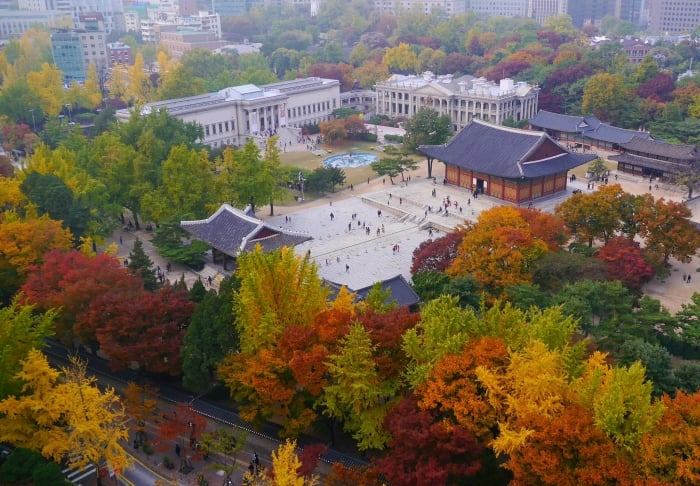 Image credit: Travel Oriented
Image credit: Travel Oriented
With over 20 benches and 130 trees along the 900-metre long road, the Stone-wall Road is an ideal place for a romantic stroll. It also offers a glimpse into the culture and history behind Korea’s first successful attempt at creating an urban space that coexists with nature. Amidst the historical site, there are modern architectures such as the Seoul Museum of Art, Jeongdong Theater and Russian legation. You can start your journey from the main gate of Deoksugung and end at the National Folk Museum of Korea.
Address: Deoksugung-gil, Jung-gu, Seoul
Directions: City Hall Station (Seoul Subway Line 1, 2), Exit 1, 2 or 12.
2. Ihwa Mural Village | Seoul
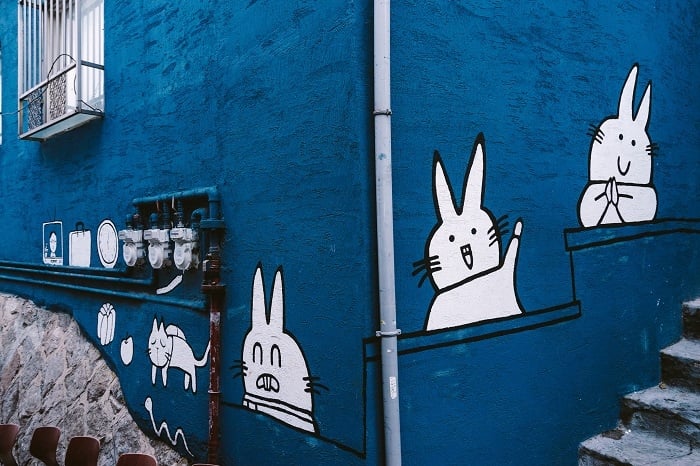 Image credit: Wei-Te Wong
Image credit: Wei-Te Wong
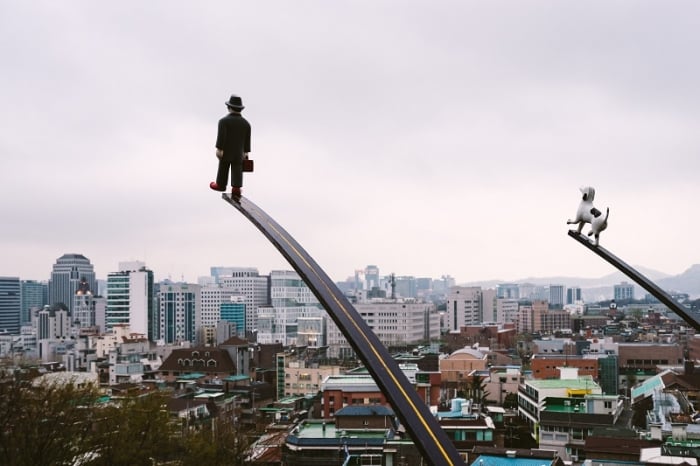 Image credit: Wei-Te Wong
Image credit: Wei-Te Wong
Just a decade ago, it was an ageing slum that was destined to be demolished and cleared to make way for new developments. However, 60 artists were invited to make the village great again. Now, thanks to the revitalization by the artists, the village is actually getting increasingly crowded with young Koreans who are intrigued by its transformation. It is called a mural village for a reason as there are many bright and colourful motifs on the walls, from paintings of flowers to giant portraits splashed across concrete underpass. This place certainly makes for a perfect Instagram shot with the variety of backdrops to choose from!
If you’re hard pressed for time and would like to get the most out of your trip to the village, the most captivating art pieces are found on Guldari-gil, which begins from the backstreets of Daehakno behind Marronnier Park at Hyehwa station (Exit 2) and goes up the hillside to the lower edge of Naksan Park and into the village, finally turning into Yulgokro 19-gil.
Besides the murals, there are also many small museums, art centres and cafes along the streets, making this area seem like a hipster enclave, filled with artistic and cultural vibes. There are a few unique museums in the vicinity such as Lock Museum, Ihwa-dong Village Museum, Blacksmith Museum and the Gaeppul Museum that is all about wine openers. Niche galleries specifically for enamelware and patchwork sewing are also located in the village.
Address: Ihwa-dong area in Jongno-gu, Seoul
Directions: Hyehwa Station (Seoul Subway Line 4), Exit 2. Walk approx. 11 mins.
3. Jeongdong Theatre | Seoul
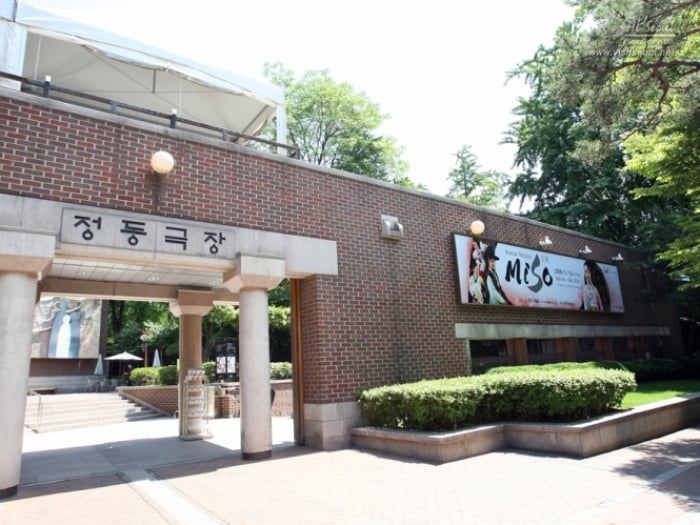 Image credit: Meryl Koh
Image credit: Meryl Koh
The 340 seat Jeongdong Theatre has received the best of Korean traditional performing arts award in 2017 and it is no surprise given its rich history and exceptional performances. The theatre opened its doors in 1995 after the restoration of Wongaksa, which is the first modern theatre in Korea. Its most famous critically acclaimed musical, Miso, is a must-see and has helped the theatre garner much attention. The theatre also regularly holds free performances and produces a number of traditional nonverbal musicals. They are currently showing the Red Cliff, which is a pansori retelling of the account of the battle of the red cliffs recorded in the Chinese classic romance of the three kingdoms, performed with fast, energetic music and powerful dance. While waiting for your play to start, you can also choose to visit the nearby National Museum of Modern and Contemporary Art to get yourself all psyched up for the performance!
Address: 43 Jeongdong-gil, Sogong-dong, Jung-gu, Seoul, South Korea
Directions: City Hall Station (subway lines 1, 2) exits 1, 2, 12, roughly 5-10 min away on foot, Gwanghwamun Station (subway line 5) exit 6, Seodaemun Station (subway line 5) exit 5, roughly 10 mins away on foot.
4. Gyeongnidan-gil Road | Seoul
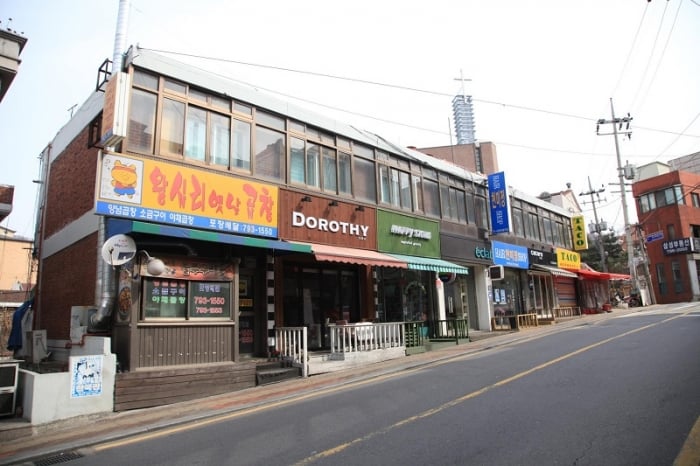 Image credit: Jinho Jung
Image credit: Jinho Jung
“Gyeongnidan” is actually a Sino-Korean word that means finance corps, which is the previous name for the Korean Army’s central accounting organ. The 1-kilometre long road consists of many alleys filled with whimsical shops and pretty cafes. It is the perfect destination for a lazy stroll if you’re looking to do some exploration instead of sightseeing.
The two most popular alleys are Jang Jinwoo Street and Craft Beer Alley. Jang Jinwoo Street is named after Jang Jinwoo who is an avid photographer and a cook. He owns a steakhouse, an octopus restaurant and several small cafes in the narrow alley. Craft Beer Alley is named as such due to the craft beer joint Magpie Brewing set up by four American men, which became quite popular with youngsters and inspired other joints such as The Booth and Craftworks to open in the alley. Besides being an alley known for craft beers, it is also the first place to introduce European-style craft beer in Korea!
There are also other shops worth checking out such the Foreign Book Store, 5BEY American Kitchen serving up Kimchi fries and Honeyst, which is a dessert shop that serves up ice cream with honey imported from the US.
Address: Itaewon-dong area in Yongsan-gu, Seoul
Directions: Noksapyeong Station (Seoul Subway Line 6), Exit 2. Walk approx. 5 mins.
5. Seonyudo Park | Seoul
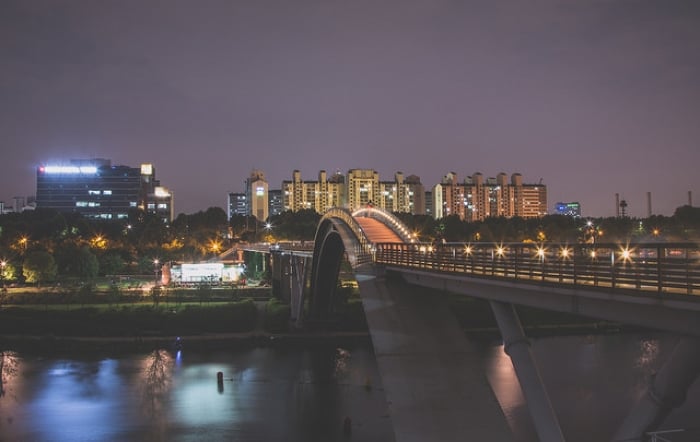 Image credit: Rene Adamos
Image credit: Rene Adamos
An island on the Hangang River that was formerly used as an industrial water treatment plant is now home to Seonyudo Park. This is the film location for many Korean dramas such as Boys Over Flowers, Princess Hours and Almost Love.
The best feature about the park is probably the Seonyudo Bridge, which is a pedestrian-only bridge that connects the Yanghwa district in the South to an island park located on the Hangang River. The name of the bridge means “spending time idly in the scenic heaven”, and it is also widely known as the footbridge of peace. Made of concrete and wood, the concept behind the bridge was to mimic nature and to allow it to blend well with its surroundings. The beauty of the bridge is perhaps best experienced at night when the colourful lights illuminate the whole bridge, producing a romantic and magical scene.
Other attractions on the island include Hangang River History Museum which showcases the cultural heritage and ecosystem of the region, as well as the Botanical Gardens.
Address: 343, Seonyu-ro, Yeongdeungpo-gu, Seoul
Directions: Seonyudo Station (Seoul Subway Line 9), Exit 2. Walk approx. 19 mins.
6. Buam-dong | Seoul
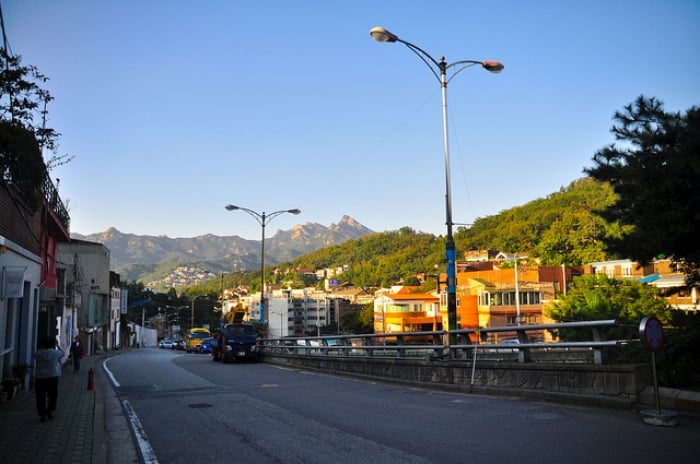 Image credit: Jordi Sanchez
Image credit: Jordi Sanchez
Known for an eclectic mix of galleries, restaurants and cafes, Buam-dong is great for avid photographers and those who are looking to snap a memorable travel selfie. The famous Sanmootonge, which is arguably the most beautiful cafe in Seoul, is located in the vicinity on the Bugak Mountain and offers a breathtaking view of northern Seoul. The cafe is undoubtedly very crowded since Coffee Prince was filmed here back in 2007. Try to visit early on the weekdays to avoid the crowds and if you’re lucky to get a seat, you have to try the Lemon Cheesecake!
After a nice tea and cake session at Sanmootonge, you can hit up ‘Space 291’ gallery, which can be easily spotted as there is a yellow cartoon creature at the entrance. The gallery is an exhibition space for artists or photographers to showcase their work, so it’s relatively laissez-faire and independent. The Seoul Museum is also another option as it boasts six floors of temporary and permanent art exhibitions featuring local and international artists. Head up to the third floor of the museum and you will be greeted with Seokpajeong, which is a former royal villa that sits nicely atop the museum and blends harmoniously with the scenic surroundings.
Address: Area around Buam-dong Community Service Center Office, 145, Changuimun-ro, Jongno-gu, Seoul
Directions: Gyeongbokgung Station (Seoul Subway Line 3), Exit 3. Take a taxi approx. 10 mins.
7. Gimnyeong Maze Park | Jeju
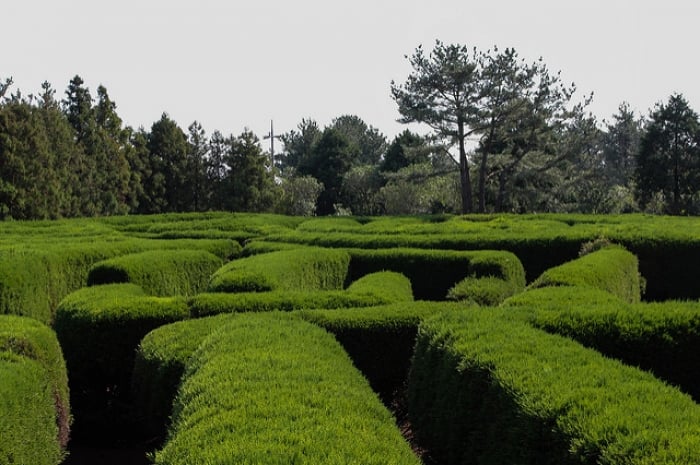 Image credit: Whyyan
Image credit: Whyyan
Funded by Frederic H. Dustin, an American Professor at Cheju National University, the Gimnyeong Maze Park contains foliages from all over Asia and has been maintained by the professor since 1987. Located between the Manjanggul Cave and Gimnyeongsagul Cave, which are two major tourist destinations, the maze is actually in the shape of Jeju Island and contains images of famous symbols well as landmarks of the beautiful island. There is a total of four ways to complete the maze and you can either choose to go with or without a map, although going with a map might be a wiser choice. It should take about 5-20 minutes to get out of the maze. You might be confused and find yourself lost in the maze, but don’t worry as you can always call for help! Admission fees to the maze for adults cost KRW 3,300, and for children ages six and above, it is KRW 1,100.
Apart from the maze, there are three skywalks and an observatory from which you can take photos and enjoy the panoramic view of the entire maze. In case this place sounds familiar, it might be because Running Man shot episode 105 at this mind-boggling maze!
Address: 122, Manjanggul-gil, Gujwa-eup, Jeju-si, Jeju-do
Directions: From Jeju International Airport take bus No. 100 and get off at the Intercity Bus Terminal. Then take a bus heading to Manjanggul Cave and get off at the parking lot by the cave entrance. The trip will normally take 50 mins.
Opening hours: Daily 8.30am to 6.30pm
8. Baekje Cultural Land | Buyeo
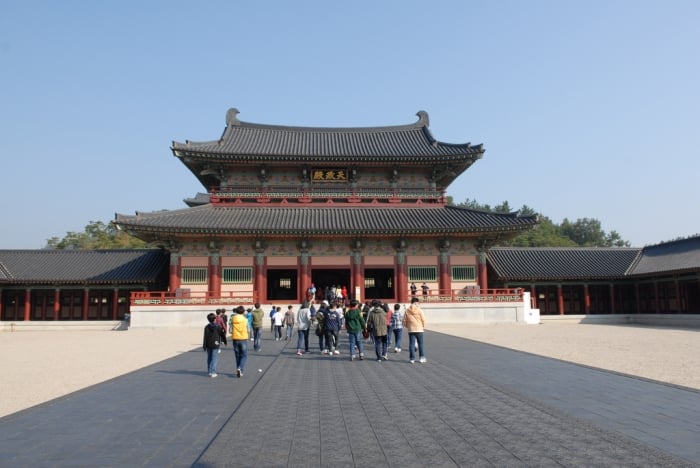 Image credit: USAG- Humpreys
Image credit: USAG- Humpreys
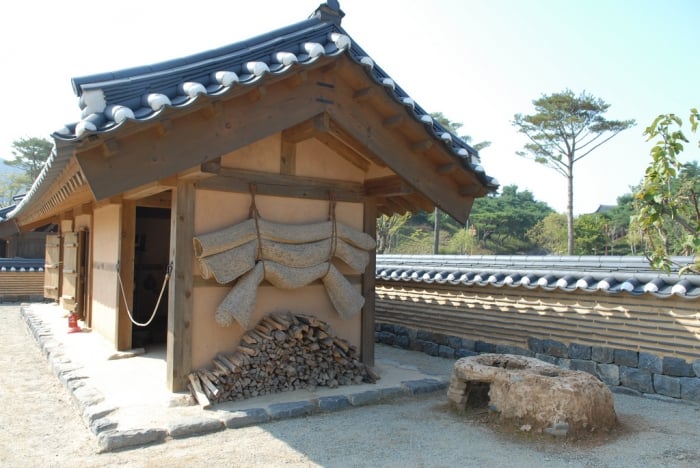 Image credit: USAG- Humpreys
Image credit: USAG- Humpreys
Built over a period of 17 years, the 690 million dollars historical theme park attempts to portray the lives of the Baekje people, especially the palace and attendant village. Focused on sharing the history of Baekje, there are several monuments in the cultural land that allows you to fully immerse and enjoy what it was like in the olden times. Cheongjeongmun is the gate to the main hall of the Sabigung, which is the royal palace during the three kingdoms period and you can actually see the Neungsa Temple, which is the royal temple. There is also the life and culture village which provides a glimpse of the different classes and lifestyles of the people during the Sabi period. To get more background information, you can also choose to visit the Baekje Historical Museum which covers the major historical highlights of Baekje. Admission fees are 4000 KRW for adults, 2000 KRW for children and 3000 KRW for youths. The cultural land is also a filming spot for the historical drama Daepungsu (The Great Seer), which explains the cardboard cutouts of the characters on the throne that is perfect for photos ops!
Cheongjeongmun is the gate to the main hall of the Sabigung, which is the royal palace during the three kingdoms period and you can actually see the Neungsa Temple, which is the royal temple. There is also the life and culture village which provides a glimpse of the different classes and lifestyles of the people during the Sabi period.
To get more background information, you can also choose to visit the Baekje Historical Museum which covers the major historical highlights of Baekje. Admission fees are KRW 4,000 for adults, KRW 2,000 for children and KRW 3,000 for youths. The cultural land is also a filming spot for the historical drama Daepungsu (The Great Seer), which explains the cardboard cutouts of the characters on the throne that is perfect for photos ops!
Address: 374, Baekjemun-ro, Gyuam-myeon, Buyeo-gun, Chungcheongnam-do
Directions: Seoul Nambu Bus Terminal to Buyeo Intercity Bus Terminal (2 hr; KRW 11,600) or take the K-shuttle.
Opening Hours: 9am-6pm (Mar-Oct) or 9am-5pm (Nov-Feb). Closed on Mondays.
9. Gwangalli Beach |Busan
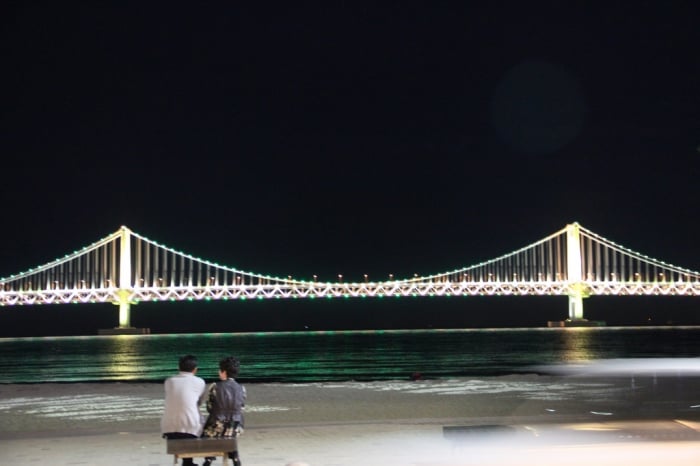 Image credit: Wilson Loo Kok Wee
Image credit: Wilson Loo Kok Wee
The famous Haeundae beach, which is known as the best beach to visit while in Busan, is perhaps overhyped. However, its neighbouring Gwangalli beach is actually the real hidden gem. With its powdery sand, chic cafes and bustling nightlife, it’s no surprise that Gwangalli beach is also known as the “city beach” that lacks the crowds of Haeundae. The best feature of the beach is perhaps the Gwangan bridge which displays LED light shows every hour after sunset, with each show lasting about 10 minutes.
Prior to heading down to the beach, you may also want to check out the cafe street right by the beach which has a whole host of themed cafes and restaurants.
Address: 219, Gwanganhaebyeon-ro, Suyeong-gu, Busan
Directions: Gwangan Station (광안역, Busan Subway line 2) exit 5.
10. Namhansanseong Fortress | Gwangju
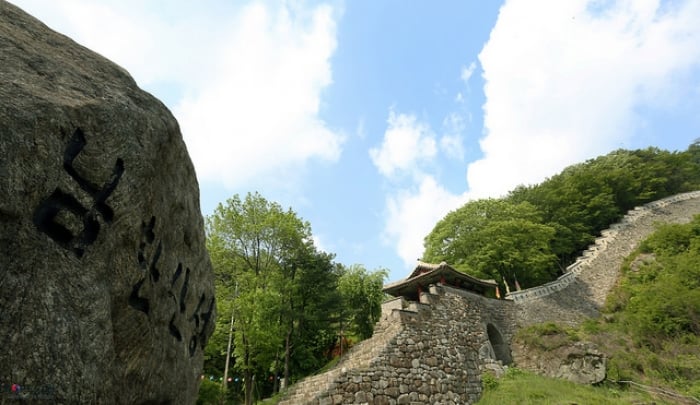 Image credit: Republic of Korea
Image credit: Republic of Korea
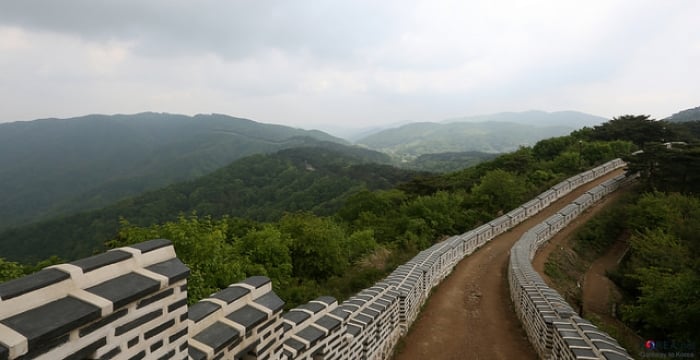 Image credit: Republic of Korea
Image credit: Republic of Korea
Located on Namhansan Mountain, the Namhansanseong Fortress was originally built during the Goguryeo period about 2,000 years ago and after many renovations, it became a designated UNESCO World Heritage site in 2014. There are five courses to walk along the fortress with varying levels of difficulty. The fortress is great for all seasons and you can enjoy the different colours of the mountain at different times of the year. In spring, the acacia trees grow thick; in summer, green forest covers the entire mountain; and in fall, red autumn leaves cover the ground. Climbing to the highest peak, Iljangsan, will give you a wonderful view of Seoul, the surrounding Gyeonggi-do and Incheon’s Nakjo area.
If you intend to drive around the fortress, there are a few options for you. You can start your journey from YangJedaero highway, go through Suseo, to Daewang Bridge and Sanseong Rotary. This is a fast route which allows you to enjoy a nice scenic drive and the cool shade provided by the valley during summer. Try to arrive early on the weekends or visit the place during the weekdays to avoid crowds. Admission is KRW 1,000 for adults, KRW 600 for youths and KRW 300 for children.
Address: 731, Namhansanseong-ro, Gwangju-si, Gyeonggi-do
Directions: Sanseong Station (Seoul Subway Line 8), Exit 2 – Take Bus No. 9, and get off at Namhansanseong bus stop.




